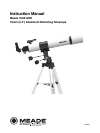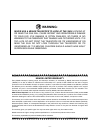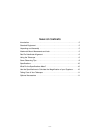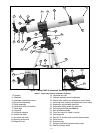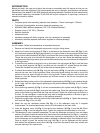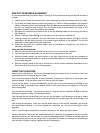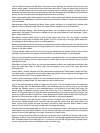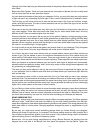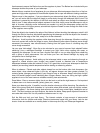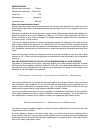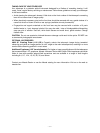
– 8 –
Optional color filters help bring out detail and contrast of the planets. Meade offers a line of inexpensive
color filters
.
Beyond the Solar System: Once you have observed our own system of planets, it’s time to really travel
f
ar from home and look at stars and other objects.
You can observe thousands of stars with your telescope. At first, you may think stars are just pinpoints
of light and aren’t very interesting. But look again. There is much information that is revealed in stars.
The first thing you will notice is that not all stars are the same colors. See if you can find blue, orange,
yellow, white and red stars. The color of stars sometimes can tell you about the age of a star and the
temperature that they burn at.
Other stars to look for are multiple stars.Very often, you can find double (or binary) stars, stars that are
very close together. These stars orbit each other. What do you notice about these stars? Are they
different colors? Does one seem brighter than the other?
Almost all the stars you can see in the sky are part of our galaxy. A galaxy is a large grouping of stars,
containing millions or even billions of stars. Some galaxies form a spiral (like our galaxy, the Milky Way)
and other galaxies look more like a large football and are called elliptical galaxies. There are many
galaxies that are irregularly shaped and are thought to have been pulled apart because they passed
too close to—or even through—a larger galaxy.
You may be able to see the Andromeda galaxy and several others in your telescope. They will appear
as small, fuzzy clouds. Only very large telescope will reveal spiral or elliptical details.
You will also be able to see some nebulas with your scope. Nebula means cloud. Most nebulas are
clouds of gas. The two easiest to see in the Northern Hemisphere are the Orion nebula during the
winter and the Trifid nebula during the summer. These are large clouds of gas in which new stars are
being born. Some nebulas are the remains of stars exploding.These explosions are called supernovas.
When you become an advanced observer you can look for other types of objects such as asteroids,
planetary nebula and globular clusters. And if you’re lucky, every so often a bright comet appears in the
sky, presenting an unforgettable sight.
The more you learn about objects in the sky, the more you will learn to appreciate the sights you see
in your telescope. Start a notebook and write down the observations you make each night. Note the
time and the date.
Use a compass to make a circle, or trace around the lid of a jar. Draw what you see in your eyepiece
inside the circle. The best exercise for drawing is to observe the moons of Jupiter every night or so.Try
to make Jupiter and the moons approximately the same size as they look in your eyepiece.You will see
that the moons are in a different position every night. As you get better at drawing, try more challenging
sights
, like a crater system on the moon or even a nebula.
Go y
our libr
ar
y or chec
k out the internet for more information about astronomy. Learn about the basics:
light years, orbits, star colors, how stars and planets are formed, red shift, the big bang, what are the
different kinds of nebula, what are comets, asteroids and meteors and what is a black hole. The more
y
ou learn about astronomy, the more fun, and the more rewarding your telescope will become.
SOME OBSERVING TIPS
Eyepieces: Always begin your observations using the 25mm low-power eyepiece.The 25mm eyepiece
deliv
ers a br
ight, wide field of view and is the best to use for most viewing conditions. Use the high-
po
w
er 9mm e
y
epiece to view details when observing the Moon and planets. If the image become fuzzy,
switch back down to a lower power. Changing eyepieces changes the power or magnification of your
telescope.
By the w
a
y
, y
ou might have noticed something strange when you looked through your eyepiece.
Although the image is right-side up, it is reversed. That means reading words can be a problem. But it
has no affect on astronomical objects. If you wish to have a fully corrected image, check out Meade’s
optional Erecting Pr
ism in the Optional Accessor
y section.
Barlow lens: You can also change magnification by using a Barlow. Remove the eyepiece from the
diagonal mirror and slide in the Barlow. And then place the eyepiece into the Barlow. Tighten the



